The Weekly Souk
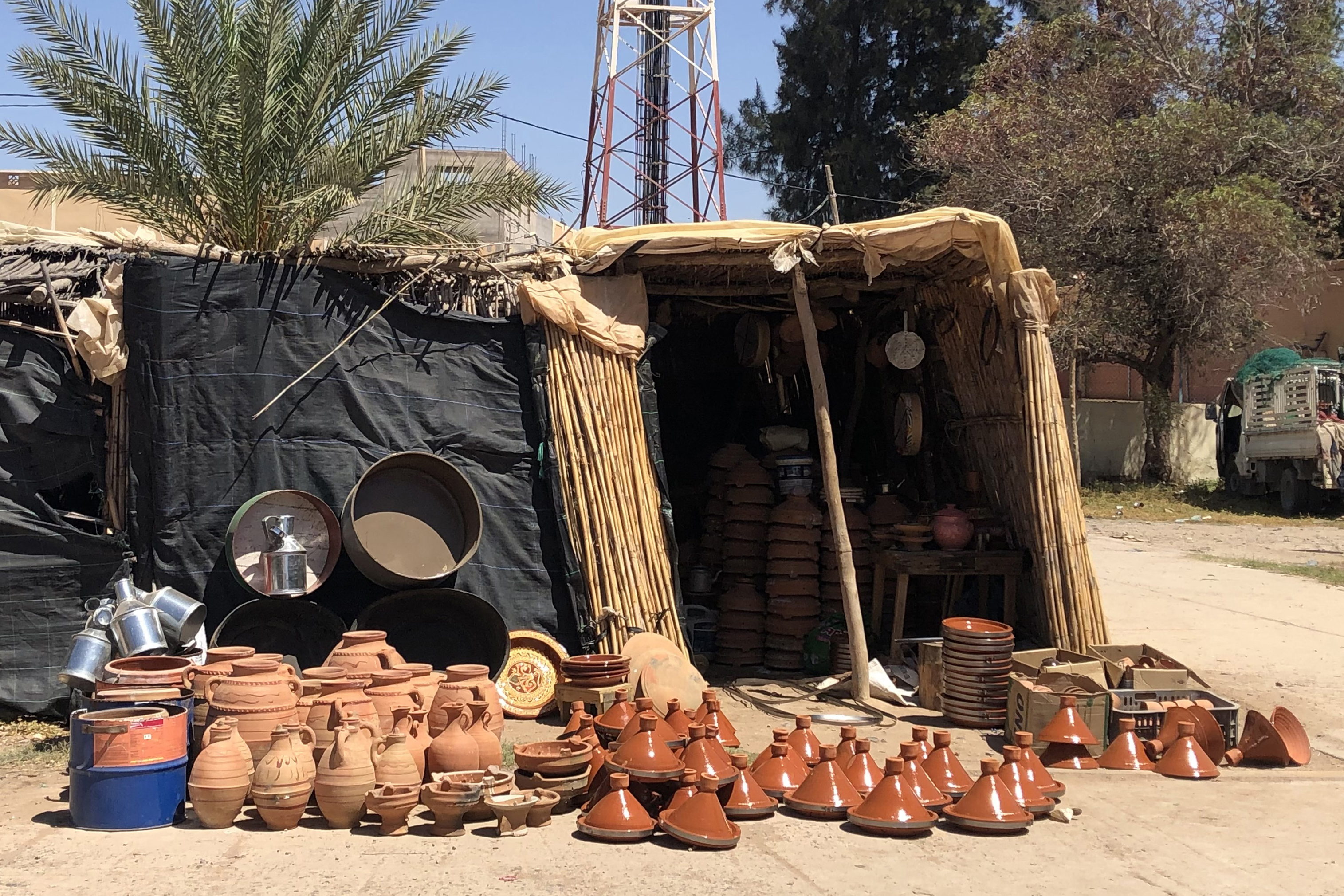 After waiting for Ramadan to end to leave Marrakech, the first stop in the search for local ceramics was the town of Tarandout, often considered a hidden gem with its perfect orange medina walls – a contrast that is even more noted after the brashness of Marrakech. It is in the fertile Souss River valley and surrounded by much agriculture and economic abundance. In the hotel, the conversation began with our plans for the day. When I announced that we were going to the weekly souk or "bazaar," in Arazane, there was some questioning, at least judging by the looks we received. Tourists do not go to Arazane for any reason! Another bias I would encounter is the fact that the ceramics I was seeking – rural, unglazed, red clay functional wares – were not considered significant, that they were just "used by country people." Many people are familiar with the glazed ceramics, both historical and those made for tourists, from the larger pottery centers such as Fez, Safi, and Tamegroute, but not the rural red clay.
After waiting for Ramadan to end to leave Marrakech, the first stop in the search for local ceramics was the town of Tarandout, often considered a hidden gem with its perfect orange medina walls – a contrast that is even more noted after the brashness of Marrakech. It is in the fertile Souss River valley and surrounded by much agriculture and economic abundance. In the hotel, the conversation began with our plans for the day. When I announced that we were going to the weekly souk or "bazaar," in Arazane, there was some questioning, at least judging by the looks we received. Tourists do not go to Arazane for any reason! Another bias I would encounter is the fact that the ceramics I was seeking – rural, unglazed, red clay functional wares – were not considered significant, that they were just "used by country people." Many people are familiar with the glazed ceramics, both historical and those made for tourists, from the larger pottery centers such as Fez, Safi, and Tamegroute, but not the rural red clay.
After driving for approximately forty minutes, we pulled into the town of Arazane and immediately found the souk in a section directly bordering the main road, which was not hard to find. The souks have a combination of permanent vendors and those that are just in town for the day, a pattern repeated in all the souks we visited. One permanent stall on the edge of the souk, a dry goods store, had both ceramic bowls for breadmaking and water jars with simple decorations of red iron oxide on red clay.
The weekly souk is a central part of rural life in Morocco. On an appointed day, established centuries ago, vendors congregate in a space, often on the edge of town, to sell their products. In a country that only has malls in the large cities, souks are the centers of commerce for everything locals need: livestock, food, housewares, clothing, bric-a-brac, carpets, and, of course, pottery. People will travel relatively large distances for these events – this is after all a country with limited infrastructure, especially in the rural areas; in the same way, a lake will form in the center of a much larger catchment area when it rains. Along with being commercial centers, the souks are also places where information, stories, and gossip are exchanged. Daily life may just include the family unit, while these weekly market days are an opportunity for exchange and interaction of all sorts. For a researcher of Moroccan ceramics, any research on rural pottery includes going to the souks.
The Earth Has Three Colors
In 2019, I published an illustrated book of Moroccan ceramics, The Earth Has Three Colors,[1] a book that detailed the breadth of ceramic activity in the country, spanning pre-history in the Rif mountains, through the Classicism of Fez and the Modernism of Safi, to the sophisticated design-focused work now found in Marrakech. Morocco is a diverse country between two seas and at the crossroads of three distinct cultures: Europe, Africa, and the Middle East. This diversity is expressed in countless ways, not least in its ceramics. The title of my book refers to the three clay colors commonly found in Morocco: traditional wares of red clay from the Rif Mountains and other rural areas; grey clay with classical forms and Andalusian-inspired glazes from Fez; and white industrial modern slip-cast clay from the cities.
As is often the case, it takes more than writing a book to satisfy an interest in a subject. I have since found that there is a whole segment of ceramics in Morocco that is made and used outside of the large cities. While the work has received little attention, it is a vital part of daily life: rural, functional, low-fired, red clay pottery, unglazed but often with simple slip or oxide decoration. It is used in Moroccan kitchens by local people: jugs to contain water, tagines for cooking, and platters for making bread. These simple wares are inexpensive as they are made for a lower-income clientele. Arazane is far from the overheated tourist economy of a city like Marrakech; it is possible to buy some of these ceramics for less than one dollar, and that same dollar can buy a significant amount of vegetables. The impetus for researching the unsung wares of rural Morocco is to emphasize that this work is as important a cultural component as the more famous Moroccan pottery and to place it formally within the canon of Moroccan ceramics.
What follows is the story of what I found, as an artist and researcher, in the southern parts of the country over a four-month period between 2021 and 2022, when I was based in both Marrakech and Essaouira as a Fulbright research scholar.
In the Footsteps of Giants
In 1980, two German anthropologists, Rüdiger Vossen and Wilhelm Ebert, spent nine months driving around Morocco in a van, looking for pottery. They wanted to catalog every site of ceramic production that they could find; Vossen had already done something similar in Spain in the 1970s. Many of the sites were just small towns with souks or tiny villages with a few producers; each site, as would befit a scientist, each site is treated with equal objectivity. Their book, Marokkanische Töpferei,[2] is a detailed account of what they found – a perfect snapshot of the state of Moroccan ceramics at that time.
Vossen and Ebert’s book is a veritable benchmark in the field, a high point, if not an actual guide, for those who wish to study Moroccan ceramics, and it is stunning that some of the wares that they found in 1980 can still be seen today in the small towns and villages. The work that they did provides a bridge between past and future, even as rapid but much-needed cultural, economic, and social change gradually continues to erode traditional rural lifestyles and their associated artisanal products. Much of what Vossen and Ebert found has disappeared in the ensuing years, but some are still out there, being made, sold, and used in the more remote areas. As examples of progress, Morocco now has a high-speed rail network, more advanced than anything in the United States, as well as one of the largest container ports in the Mediterranean, Tangier Med. The work of these Germans (I am following in some big footsteps), the amazing contemporaneity of Morocco, and the continued existence of red clay ceramics with roots in pre-history create the space for my research and this article.
Vossen and Ebert divided Morocco into nine distinct regions, and my research has also acknowledged these divisions in homage. There are two main ways of finding rural ceramics: the weekly souks and going directly to the workshops where the ceramics are made. Vossen and Ebert did both, and this has been my approach. About an hour south of Marrakech lies the town of Ourika, and south of that, in the foothills of the High Atlas Mountains, where it starts to get lush and green due to the higher elevation, is a pottery village called Douar Tafza. There are mountain streams and clay deposits here, and so potters. This way of working, where the clay can be found, is timeless and essentially pre-industrial. And unlike the souk, where the work is shipped in, the potters in Douar Tafza make, fire, and sell their wares in workshops right next to the road. In this region, described as the High Atlas by Vossen and Ebert, there is no decoration, just simple thrown forms, often water jugs. Note that the working conditions are very basic; life in rural Morocco can be brutally hard, and these spaces are dirty and often chaotic. Unfortunately, just as this work is undervalued and overlooked, so are the lives of rural artisans.
Another example of functioning workshops can be found in Tameslought, a pottery town south of Marrakech. There are seven different compounds in a section on the outskirts of town, each owned by a different family and each of which produces distinct work: there are decorated plates; there are tangias, a vessel used to cook a meat dish of the same name; and there are large planters. One thing that characterizes Moroccan ceramic production is that the makers produce large amounts of the work with no regard for demand.
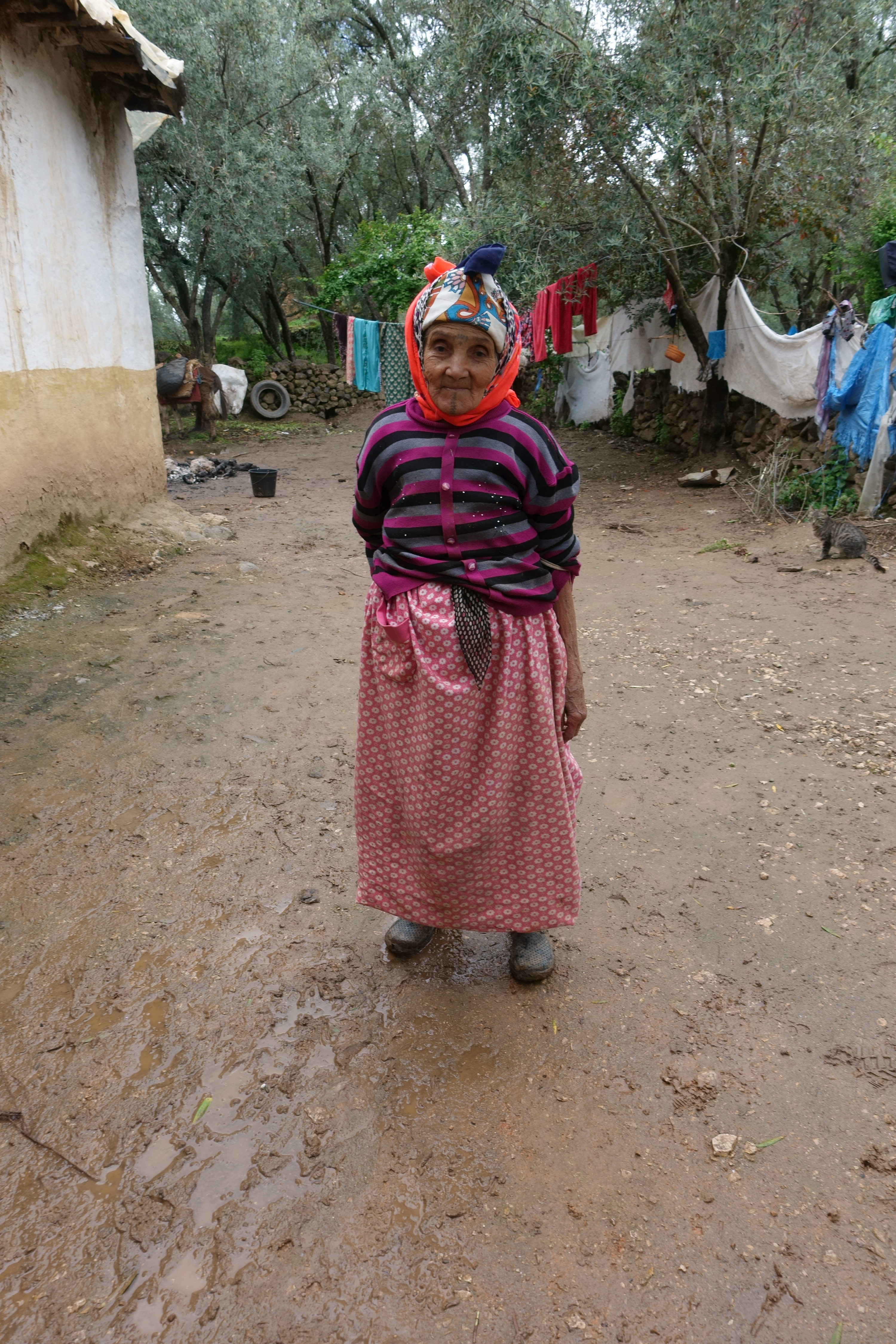
Modernism
Writing a book can often have unintended consequences. Initially, I thought that my book, The Earth Has Three Colors, was an illustrated book about the diversity of Moroccan ceramics. However, I realized I was also writing a book about the impact of modernism on Morocco in the twentieth century and how the country has evolved from a pre-industrial rural place to a post-industrial twenty-first-century nation in less than one hundred and fifty years. There are two important but contradictory parts to this conversation about modernism. The good side is that Moroccans are becoming better educated and have left the villages, exchanging rural poverty for a better life. The middle class is getting larger every day. However, what has been lost, lamentable for both researchers and Moroccan ceramic culture alike, is that people are not making pottery for their own consumption in the villages; not only is there less local, red clay ceramic activity, but it is verging on extinction. The appearance of cheap and modern consumer plastic goods from overseas has also contributed to these declines.
The work from the Rif Mountains, which has its roots in pre-history, presents something unique culturally: in a field nationally dominated by men, the work from the Rif is only made by women. The presence of women potters is important to recognize, as Morocco is profoundly gendered. Another great in the study of Moroccan ceramics, in whose footsteps I also follow, is my mentor, Hammad Berrada, who published a seminal book about this female pottery in the Rif Mountains, La Poterie Féminine au Maroc.[3] Again using Vossen and Ebert as guides, he documented this extraordinary segment of cultural activity. Berrada was very clear in his remit that he was only interested in that which came from the Rif and was made by women. There is a palpable tension between modernization and changing lifestyles on the one hand and declining pottery manufacture on the other: most of the villages that Berrada visited in 2000 no longer make any pottery whatsoever, so the last twenty years have seen enormous attrition. In 1980, in Boudriss, on the southern edge of the Rif Mountains, according to Vossen and Ebert, there were over ninety women making pottery in this small village. In 2018, I only found one. It is hard to know what is more significant: the fact that there are fewer and fewer potters or that there are still thriving pockets of ceramic production, as I mentioned, in places like Douar Tafza and Tameslought.
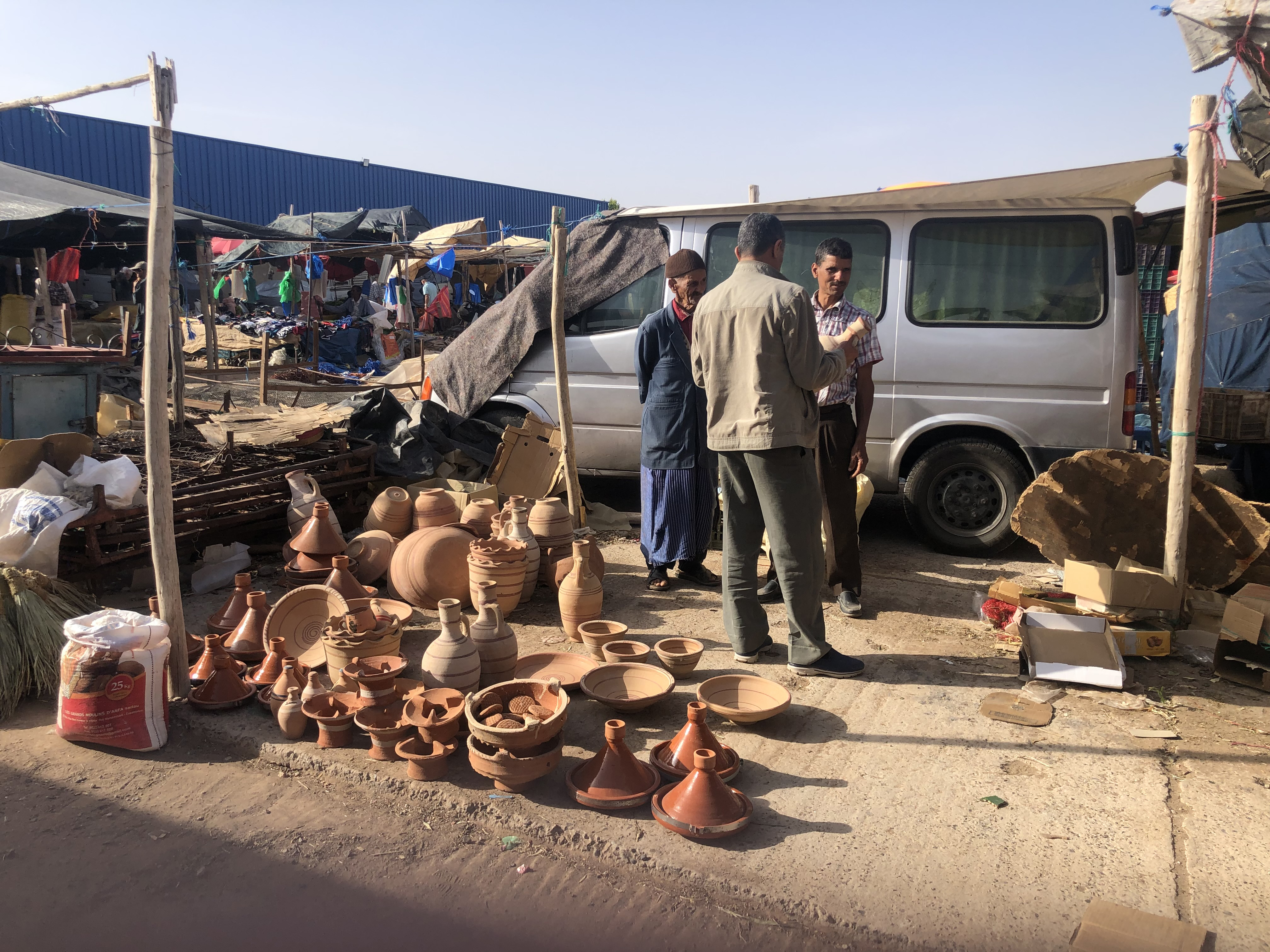
How Local is Local?
Stating that it is still possible to find local work in the souks does require being qualified. We are all familiar with the term "globalism," the notion that the world is just one big marketplace. Globalism tends to homogenize, while localism tends to provide distinction. In the souks, however, one can recognize a national quality to some of the ceramics being sold: globalism hidden in an obviously local environment. Much of what passes for local is actually made in various centralized locations across the nation and then shipped to the souks, certainly to satisfy local demand. The context is local, but that is as far as it goes. Clearly, the trade and transport links in Morocco are strong, and the lines between different producers and different regions are becoming blurred. Some vendors will sell at a different souk each day of the week, bringing their van full of ceramics.
In practice, this means that a typical souk stall will have a mixture of work from different places, some extremely local, some regional, and some from far-removed, larger producers. It is the former that interests me, and it is always possible to find at least one example of work that is unique to the area at a stall in a souk. On the other hand, the village of Boughrart near Demnat, just outside of Marrakech, is an example of a production center that produces glazed bowls and tagines with colorful decorations that can be found in many stalls across the region; indeed, I have seen these plates as far away as Taroudant and Essaouira. All you need is a delivery truck. What looks local and is sold locally is not necessarily local.
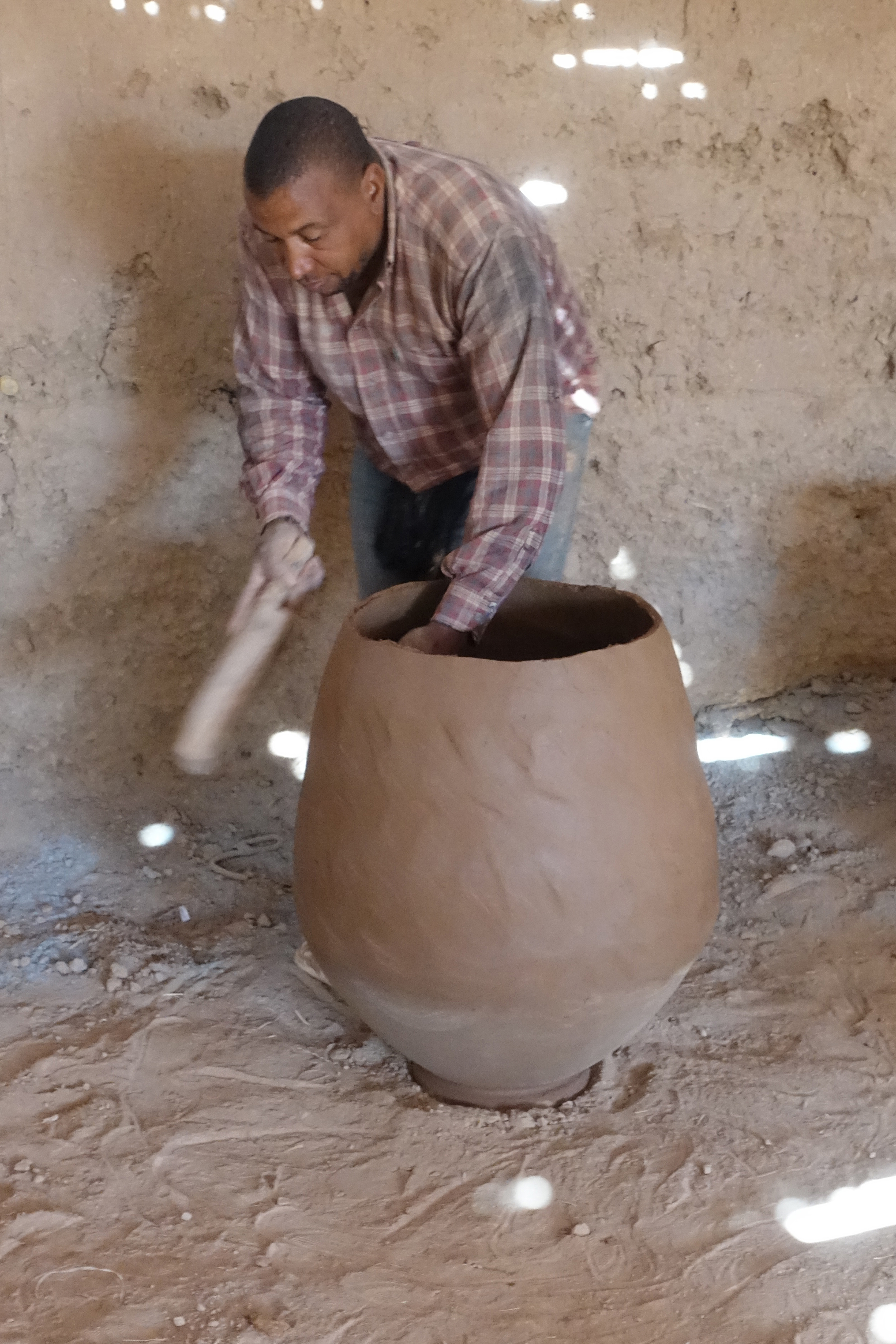 The North African Desert
The North African Desert
Zagora is in the northern part of the Sahel desert, the "other side" of the High Atlas Mountains; further to the south lies the desert and, eventually, the rest of Africa. This is one of the places where the camel trains came on ancient salt trade routes from sub-Saharan Africa. In nearby Tamegroute, south of Zagora, another important pottery center, there was a famous sign, no longer extant, that said, "Fifty-two days to Timbuktu" – probably no exaggeration. In an oasis just to the north of Zagora is a small settlement called Astour, and due to the availability of water and clay, I found a workshop with a potter named Mohamed, who makes technically demanding, enormous, unglazed ceramics. This work had a sophistication and sense of design that implied a different influence and destination; perhaps foreigners were involved. I have been describing an underknown, even unloved, aspect of Moroccan ceramics: the utilitarian, functional work that has been used for centuries and never raised beyond its basic roots and intentions, and now I find the same energy and traditional technology being channeled into a high-end design application. This is exactly how the artisanal technology of rural Moroccan pottery should be used before it disappears completely, as has happened to other types of rural ceramics in many parts of the country.
One final, magical anecdote from the same village on the same day: just up the street, I passed another pottery, where they were making oversize candlesticks, again technically demanding and not for local use. Even more amazing was that I had met this man, also named Mohammed, a popular Moroccan name, in a souk in Tamegroute in 2018. Either my research is thorough or Moroccan ceramics is a very small world; I would opt for the latter! The conceit is the same, however: an artisan whose work has roots in pre-history is now making work to satisfy a wealthy clientele in Marrakech or beyond. It does not matter that there is a middle person involved; what matters is that these traditions are allowed to continue and that they are being supported and encouraged. Just as Vossen and Ebert’s intention was to document Moroccan ceramics to create a bulwark against the coming waves of progress, my intention is similar. I hope this article will be a valid attempt to acknowledge, support, and preserve a part of a unique and diverse cultural heritage.
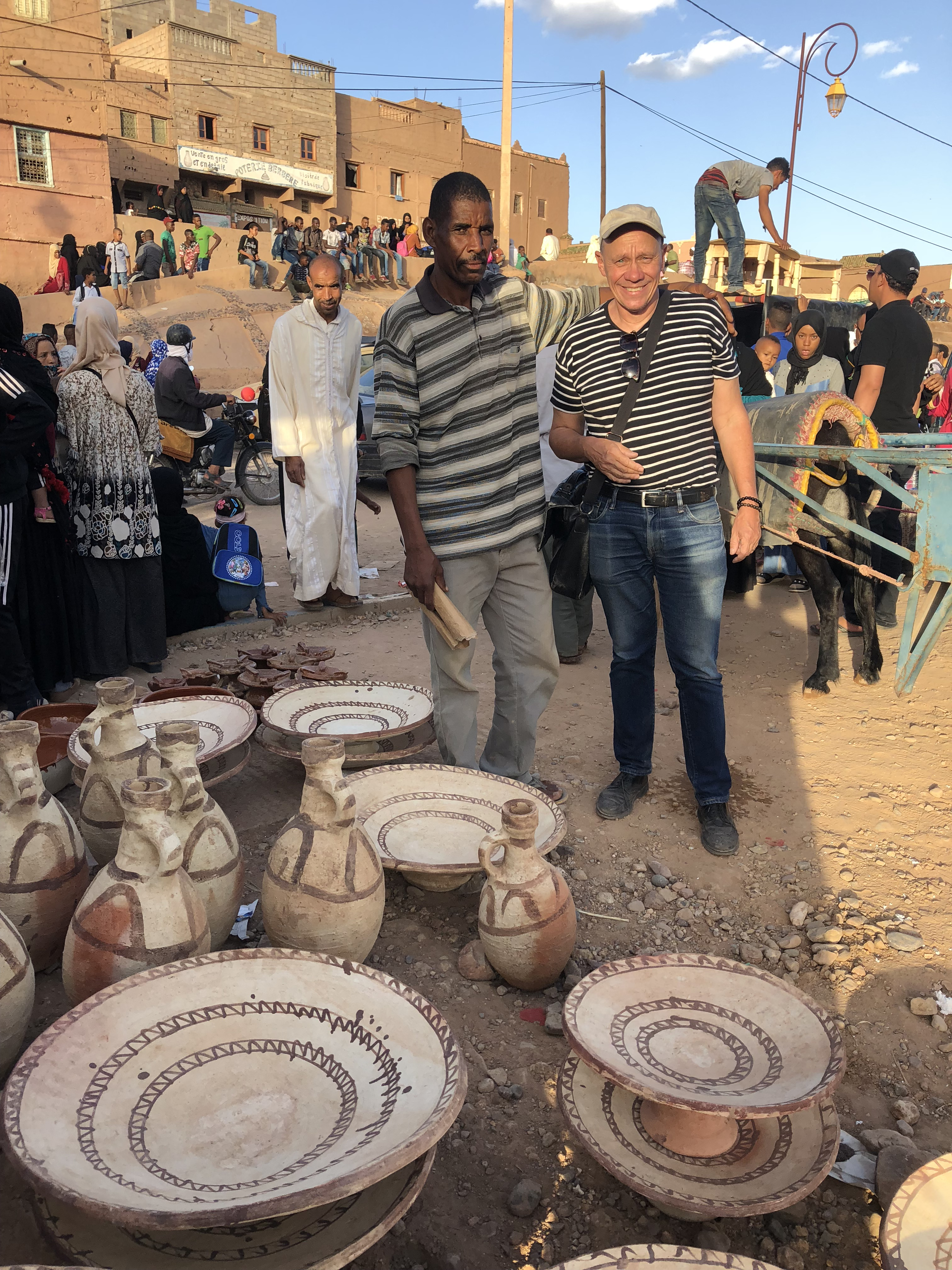
Notes:
[1] David Packer, The Earth Has Three Colors: A Celebration of Moroccan Ceramics (Costa Mesa, CA: Mazda Publishing, 2019).
[2] Rüdiger Vossen and Ebert Wilhelm, Marokkanische Töpferei: Töpferorte und – Zentren: eine Landesaufnahme (Bonn: Habelt, 1998).
[3] Hammad Berrada, La Poterie Féminine au Maroc (Women's Pottery in Morocco), Trans. Rita Stirn. Rabat: Editions Marsam (Casablanca: P & M Editions, 2001).
 Share
Share